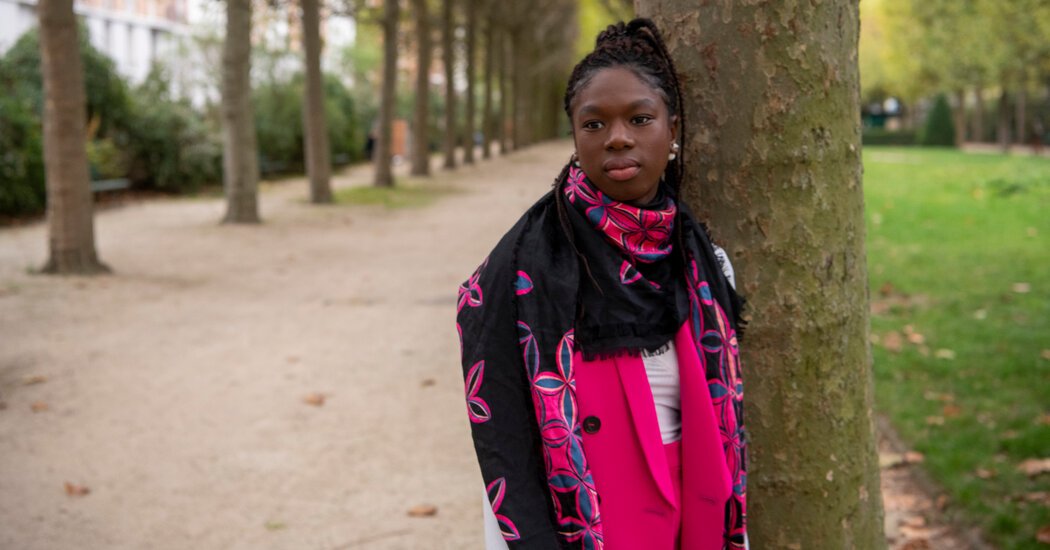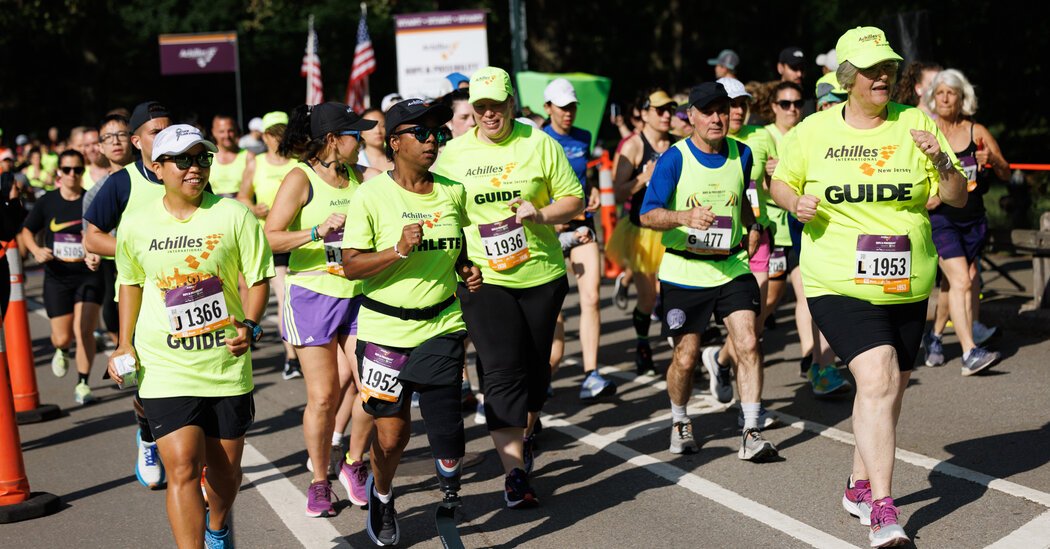
At Wimbledon, Not All the Artistry Is on the Court
[ad_1]
Sitting courtside at Wimbledon, the sculptor Mark Reed found inspiration as he watched players serve. The power, speed and beauty mesmerized him. Commissioned by the All England Club to create a sculpture that combined tennis and his trademark metal trees, Reed envisioned a piece that presented a serving player in human and tree form.
This year, when fans enter the tournament grounds through Gate 1, they will be greeted by “The Serving Ace Meeting Tree.” The nearly 12-foot-tall bronze sculpture features a tree trunk and branches curved to represent a player in midserve. A canopy of stainless-steel leaves shades the bench below.
The sculpture is the newest addition to the Wimbledon landscape and to the collection of artwork produced by the Championships Artist Program.
“Seeing it lowered into place at Wimbledon, that touchdown point, was very emotional,” Reed said. “It was like ‘Wow, it’s whole, it’s safe, it’s in position and looks right.’ ”
In 2002, after refurbishing its clubhouse, the All England Club recognized a need for more artwork and commissioned pieces that depicted its rich history. Those commissions evolved into the artist program in 2006.
For nearly two decades, a club committee has invited artists who work in a variety of mediums, including sculpture, painting, glass blowing, engraving, paper quilling, illustration and poetry, to create pieces that embody Wimbledon.
Some of the artists are well-known with several prestigious commissions on their résumés, including work for the royal family. Others gain greater visibility through the program. All have been based in Britain, though it’s not a requirement, and all have collaborated with club leaders on themes and tie-ins to tournament traditions.
“The Serving Ace Meeting Tree” reflects a post-pandemic change to the program. Instead of annual commissions, the club now focuses on fewer, larger-scale pieces that may take years to complete. Reed said designing, casting and assembling the tree required almost 6,000 hours of work.
Honored to be selected for Wimbledon commissions, the artists want to create pieces that provide an original take on the tradition-steeped event and connect with club members and visitors. That often results in a mix of emotions, typically excitement and anxiety.
“People are so passionate about Wimbledon that everybody will have an opinion about what you’ve done; that’s quite a challenge,” said Eileen Hogan, who made oil paintings in 2009 that are showcased the Members’ Enclosure.
Working at Wimbledon helped prepare Hogan for her most recent commission: the coronation service of King Charles III and Queen Camilla. Hogan was the first woman to receive that assignment.
Artists commissioned by the All England Club tour the grounds and the Wimbledon Lawn Tennis Museum before the tournament starts and return to watch matches. Walking around with sketchbooks and cameras, they find inspiration almost everywhere — the clubhouse décor, championship trophies, flower beds, archived photos, action on the court, private clubhouse spaces, and conversations with members, caterers, ball boys and ball girls.
“We try and show the artists our heritage and give them as much access as possible,” said Sarah Frandsen, who as program coordinator supports the projects from conception to installation. “We want them to be really fired up about the commission. We never want to be too prescriptive.”
Jeremy Houghton, a painter, attended matches in 2017 and called the commission a “dream ticket.” He painted watercolors of Andy Murray, Roger Federer, Venus Williams and other top players. He also captured junior matches, wheelchair tennis and club staff.
“You’ve got your rock stars on the court, but there’s a huge amount of people behind the scenes making things tick,” he said. “I was keen to portray both sides of that.”
The glassblower Katherine Huskie vividly remembers the tour she took with the engraver Nancy Sutcliffe in 2018. “What really struck us was all of the details on the wallpaper, the curtains, the carpet,” Huskie said. “It looks like little patterns, then you get closer and realize it’s tennis rackets.” That influenced how Huskie and Sutcliffe approached their commission.
With a nod to the plate-shaped women’s trophy, they created two large glass discs. A ribbon of gold leaf winds around one disc, representing the seams on a tennis ball. The ribbon features engravings by Sutcliffe. From a distance, the engravings appear as an abstract pattern, but up close they’re an intricate arrangement of players in midstroke.
Yulia Brodskaya, who specializes in paper quilling, built a three-dimensional aerial map of the Wimbledon grounds in 2015. The colorful piece consists of more than 1,000 paper strips that have been rolled, curled, folded and twisted into easily recognized images, including flowers on the grounds and Serena Williams with the women’s trophy.
“The whole experience was a visual representation of people being proud of 140 years of heritage and caring deeply about all aspects of the tournament,” Brodskaya said.
As the program’s first and only poet, Matt Harvey enjoyed a different kind of Wimbledon experience. In 2010, he posted a poem online each day and read verses to fans waiting in lines.
“I thought I might be imposing poetry on people, but they really enjoyed it,” he said. “People wanted to be part of Wimbledon. I was helping them feel more part of it because they were having an interaction with the poet who was one of its odd little features. It was a celebratory thing, of the game, of the language.”
After fulfilling their commissions, the artists get invited to the royal box, where they can celebrate their accomplishment and socialize with V.I.P.s. It’s a highlight of the program, but the most meaningful aspect remains creating art that becomes part of Wimbledon.
When Huskie and Sutcliffe watch broadcasts of the championship matches, they’re reminded of that. Their glass disc with the gold ribbon is prominently displayed above the staircase leading to Centre Court. As the finalists walk down the stairs, Huskie and Sutcliffe can catch a glimpse of their work.
“The whole project was mind blowing in terms of scale,” Sutcliffe said. “We tried to make something that was worthy of the space.”
[ad_2]
Source link


